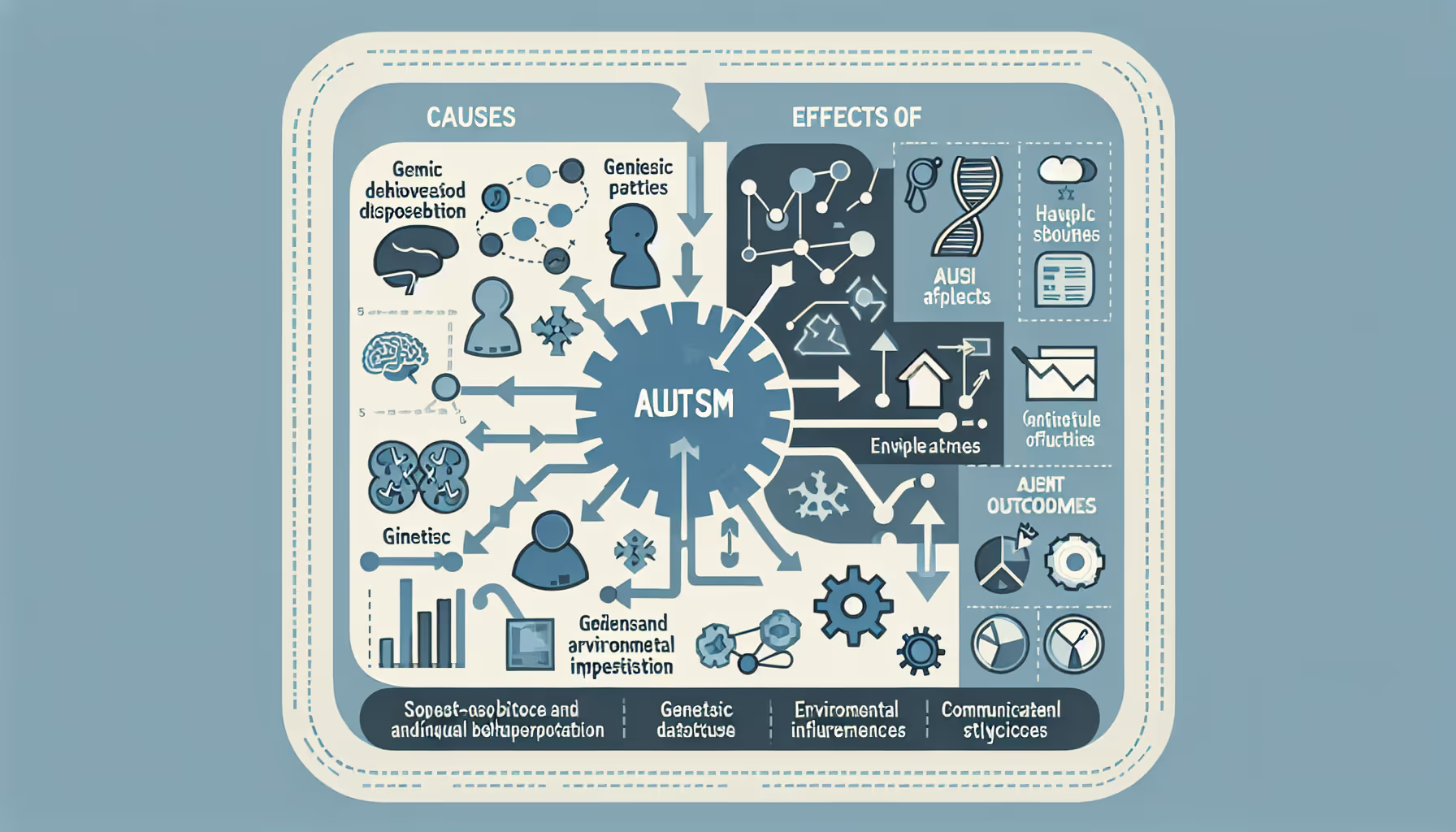ABA Therapy for Autism Spectrum Disorder Therapy
Understanding ABA Therapy: A Comprehensive Guide on Its Role in Autism Treatment
Introduction to ABA Therapy
Applied Behavior Analysis (ABA) has established itself as a cornerstone in the treatment of Autism Spectrum Disorder (ASD). Rooted in behaviorist psychology, ABA therapy centers on the principles of learning and behavior, tailoring interventions to enhance beneficial behaviors while curbing maladaptive ones. This article delves into the methodologies, effectiveness, and nuances of ABA therapy, addressing common questions and clarifying misconceptions.
Exploring ABA Therapy Methodologies

Core Principles of ABA
Applied Behavior Analysis (ABA) is anchored in the scientific understanding of learning and behavior. It aims to enhance essential skills while minimizing challenging behaviors in children with autism. The therapy breaks down tasks into bite-sized concepts that facilitate learning and retention. By focusing on observable actions, ABA effectively teaches new skills and improves overall functioning.
Positive Reinforcement
A pivotal aspect of ABA is the use of positive reinforcement. This technique involves rewarding desired behaviors to encourage their recurrence. By providing incentives—like praise, tokens, or treats—therapists can motivate children to engage in constructive actions. Positive reinforcement helps children grasp the connection between their actions and the consequences, reinforcing productive behaviors over time.
Individualized Assessment and Planning
Each ABA program is thoughtfully tailored to a child’s unique needs and strengths. Board Certified Behavior Analysts (BCBAs) conduct comprehensive assessments to create personalized treatment plans. These plans take into consideration various factors, including the child’s preferred learning style and current skill set. Individualized attention ensures that therapy is both effective and adaptable, allowing children to thrive in diverse environments.
| ABA Key Components | Description | Benefits |
|---|---|---|
| Core Principles | Science-based approach focusing on behavior modification | Enhanced learning outcomes |
| Positive Reinforcement | Rewarding desirable behaviors to encourage repetition | Encourages positive behavior and engagement |
| Individualized Planning | Customized treatment plans based on assessments | Addresses unique needs and promotes growth |
This understanding of ABA not only highlights its robust framework but also ensures its adaptability to improve the everyday lives of children with autism.
The Effectiveness and Benefits of ABA Therapy

Evidence-based outcomes
Applied Behavior Analysis (ABA) is recognized as a highly effective therapy for children with autism spectrum disorder (ASD). Extensive research supports its ability to improve various skills and reduce problematic behaviors. Studies have shown substantial gains in cognitive measures, communication abilities, and social interactions among participants. Over 89% of children undergoing ABA therapy demonstrate improvements in IQ, social skills, and adaptive behaviors. Rigorous studies indicate an improvement rate of 36% across various measured outcomes when compared to control groups.
Skill improvement and symptom reduction
ABA is tailored to the individual needs of each child, focusing on a broad range of skills including:
- Communication
- Social Interaction
- Self-care Skills
- Daily Living Skills
- Academic Skills
These targeted efforts help children not only manage their autism symptoms better but also enhance their overall quality of life, promoting greater independence in daily activities. The therapy fosters important life skills through positive reinforcement, making it a valuable tool for skill acquisition.
Importance of early intervention
Research emphasizes starting ABA therapy as early as possible—ideally between ages 2 and 6—to maximize its benefits. Early intervention has been shown to lead to significant developmental gains, indicating that participating in ABA can reduce the need for special services as children age. The advantages of initiating ABA therapy early cannot be understated, as studies link early exposure with improved communication outcomes for children at risk of being non-verbal.
Is ABA therapy only for autism?
ABA therapy is primarily recognized for its effectiveness in supporting individuals with autism, addressing behavioral challenges, and promoting skill development. However, it is not limited to autism; ABA therapy can also benefit individuals with various conditions like ADHD, OCD, PTSD, and developmental delays. Many misconceptions exist regarding the applicability of ABA therapy, underscoring the need for greater awareness of its broader uses. While some insurance companies may require an autism diagnosis for coverage, individuals without such a diagnosis can still benefit from ABA techniques. Overall, ABA therapy employs scientifically-based methods that can enhance the skills and behaviors of a wide range of individuals, not just those on the autism spectrum.
Insights from Modern ABA Techniques

What are some of the techniques used in ABA therapy?
Applied Behavior Analysis (ABA) incorporates a variety of techniques aimed at enhancing developmental skills in children with autism. Among the most prominent techniques are:
1. Discrete Trial Training (DTT)
DTT is a structured approach that simplifies learning by breaking complex skills into smaller, manageable steps. This method involves:
- Step-by-step instructions: Educators guide children through tasks, ensuring mastery of each step before moving on.
- Reinforcement: Correct responses are rewarded, thus encouraging behavior repetition.
- Clear feedback: Immediate feedback helps children understand the consequences of their actions, paving the way for effective learning.
2. Pivotal Response Training (PRT)
PRT focuses on teaching key skills that can lead to improvements in other areas of development. This technique emphasizes:
- Natural learning environments: Instruction takes place during everyday interactions, making learning more relevant and contextual.
- Encouraging engagement: By fostering child-initiated activities, PRT enhances motivation and encourages social interactions.
- Flexible goals: Skills such as initiating communication or maintaining attention are targeted, providing a broad foundation for further skill development.
Modern ABA techniques like DTT and PRT utilize tailored approaches, ensuring personalized care for every child. Through positive reinforcement, modeling, and other ingenious methods, ABA therapists effectively support children's growth in social, communication, and self-regulatory skills.
Controversies and Criticisms of ABA Therapy

Is ABA therapy harmful? What are the controversies surrounding it?
ABA therapy, or Applied Behavior Analysis, has been a cornerstone of treatment for children on the autism spectrum for decades, aiming to enhance their skills and reduce challenging behaviors. However, it is not without controversy. Critics express concerns that ABA may prioritize conformity to neurotypical norms over the well-being of autistic individuals. They argue that the therapy often emphasizes compliance rather than fostering self-acceptance, which can lead to emotional distress.
Potential negative impacts include the observation that some traditional methods might induce anxiety or stress in children, especially if punitive measures are inappropriately applied. This raises fears of creating a negative connotation around behavior modification, potentially leading to emotional issues such as PTSD.
What are the contemporary practices in ABA?
In response to these criticisms, many practitioners are shifting their approach. Contemporary ABA focuses on positive reinforcement and individualized support rather than solely eliminating undesirable behaviors. This evolution aims to balance behavior modification with respect for neurodiversity, ensuring that interventions are tailored to each child's unique strengths and preferences.
Balancing benefits and criticisms
Despite these concerns, numerous studies affirm the effectiveness of ABA therapy. It is recognized for improving language skills, social interactions, and significant developmental outcomes when implemented early. The continuing debate about its practices underscores the importance of ongoing dialogue between practitioners, advocates, and families to ensure that the focus remains on the best interests of children with autism, embracing both the benefits and criticisms of this widely used approach.
Comparative Overview: ABA vs Other Therapies

Differences from developmental therapies
Applied Behavior Analysis (ABA) stands out from developmental therapies by its focus on behavior modification through systematic reinforcement. While developmental therapies might emphasize holistic skill development and building emotional connections, ABA zeroes in on observable behaviors and the circumstances that influence them. This structured approach often involves detailed assessments to create tailored strategies for each child with autism spectrum disorder (ASD).
Effectiveness comparison
Studies show that ABA is one of the most effective interventions for improving communication, social skills, and adaptive behaviors in children with ASD. ABA has an effectiveness rate of over 89% when it comes to treating core symptoms of autism, particularly when implemented early and consistently. Other therapies, such as speech therapy or occupational therapy, can complement ABA by addressing specific skills like communication and daily living tasks but often lack the structured methodology of ABA that leads to measurable behavioral changes.
Role in comprehensive treatment plans
Incorporating ABA into comprehensive treatment plans is crucial since it helps build foundational behaviors that other therapies may build upon. While medication might manage symptoms related to autism, it does not alter behavioral patterns. A multi-disciplinary approach, including ABA along with speech and occupational therapies, yields the best outcomes for children—allowing for a well-rounded development that promotes independence and life skills.
| Therapy Type | Focus Area | Effectiveness for ASD |
|---|---|---|
| ABA | Behavior modification | High |
| Speech Therapy | Communication skills | Moderate to High |
| Occupational Therapy | Daily living skills | Moderate |
| Developmental Therapies | Holistic skill building | Variable |
ABA therapy is a cornerstone of effective treatment for ASD, especially when combined with other supportive therapies that cater to the individual needs of each child.
Establishing ABA Therapy: The Training Process
What is the process for receiving ABA therapy training?
To embark on a career in ABA therapy, candidates must undergo a structured training process. This typically begins with enrolling in courses designed to meet the requirements for the Registered Behavior Technician (RBT) credential. The training involves a comprehensive, self-paced curriculum of 40 hours, developed by expert Board Certified Behavior Analysts (BCBAs).
Credentialing and certification
The training not only equips individuals with foundational knowledge in behavior analysis but also emphasizes practical applications through real-life scenario videos. Once the coursework is completed, candidates must meet specific educational prerequisites, accumulate supervised experience, and pass a certification exam to earn their credentials.
Training courses and prerequisites
To ensure the highest quality of education, it is vital for trainees to select accredited programs that offer robust content on critical areas such as verbal behavior training, ethical practices, and family involvement.
Role of Board Certified Behavior Analysts (BCBAs)
BCBAs play an essential role in the training process by developing curricula, providing mentorship, and supervising candidates during their practicum. Their guidance ensures that new therapists are well-prepared to provide effective ABA interventions for children with autism.
Implementing and Optimizing ABA Therapy
Starting Therapy
Initiating ABA therapy involves detailed assessments conducted by a Board Certified Behavior Analyst (BCBA), who will evaluate the child's unique strengths and challenges. These evaluations inform a tailored treatment plan designed to address the individual needs of the child with autism. Early intervention is crucial; research indicates that starting therapy between ages 2 and 6 yields the best outcomes in terms of skill development and behavioral improvement.
Family Involvement
The role of family in ABA therapy is vital. Training parents in strategies to reinforce positive behaviors at home significantly enhances the efficacy of the intervention. Family members are engaged in the treatment process, ensuring consistency and support outside of structured therapy sessions. This involvement helps generalize skills learned in therapy to everyday life, fostering a supportive learning environment.
Long-term Outcomes
Long-term studies suggest that children receiving extensive ABA therapy (averaging 25 hours per week) can achieve substantial outcomes, including improved communication, social skills, and independence. Many children show gains across various developmental measures, reducing the need for additional special services as they grow. This long-term approach helps lay a strong foundation for their future, enhancing the quality of life and promoting meaningful participation in social settings.
Conclusion
ABA therapy continues to be one of the most practiced and researched interventions for individuals with Autism Spectrum Disorder, offering structured and individualized support. Despite the controversies, the evolution of ABA towards a more holistic approach reflects a significant shift in its application. Understanding both its potential benefits and criticisms is vital for families considering this therapy for their child. With proper implementation and ongoing adaptation by skilled professionals, ABA therapy can enhance the quality of life for those with ASD, fostering independence and integration into society.
References
- Applied Behavior Analysis (ABA) | Autism Speaks
- Treatment and Intervention for Autism Spectrum Disorder - CDC
- Applied Behavior Analysis (ABA) - Cleveland Clinic
- The Controversy Around ABA - Child Mind Institute
- ABA Therapy for Autism: Benefits and Examples - Verywell Health
- Applied Behavior Analysis in Children and Youth with Autism ...
- Behavioral Treatment of Autism and Other Developmental ... - BACB
- Questions and answers about ABA | Autism Speaks
.png)



























